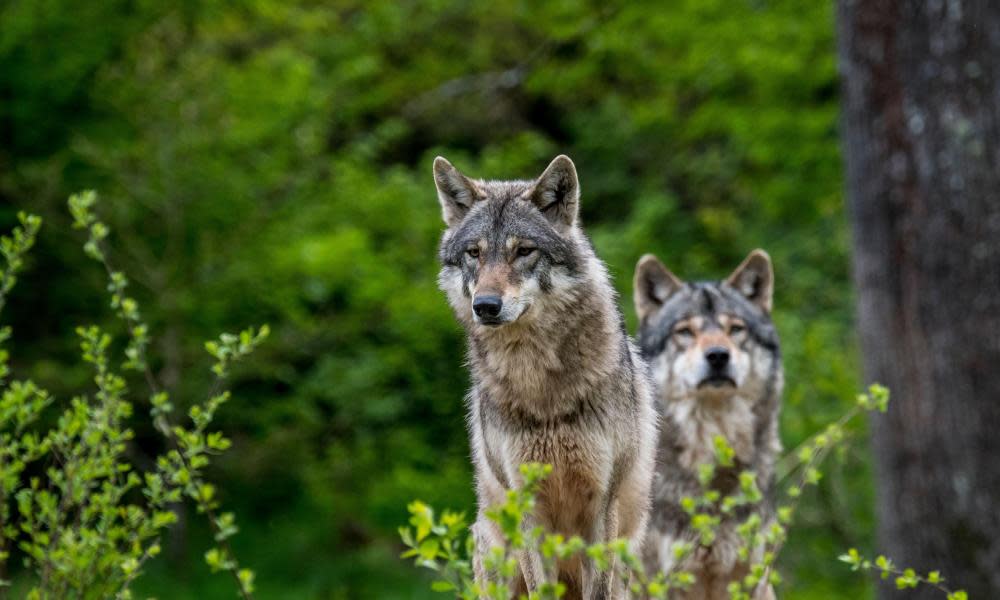EU to rethink conservation status of wolves after numbers surge

The EU is to review the conservation status of wolves on the continent after a remarkable comeback of the carnivore species raised protests from farmers whose livestock have become prey.
“The concentration of wolf packs in some European regions has become a real danger for livestock and potentially also for humans,” the European Commission president, Ursula von der Leyen, said. “I urge local and national authorities to take action where necessary. Indeed, current EU legislation already enables them to do so.”
It is a subject close to Von der Leyen’s heart after her pony, Dolly, was killed last September by a wolf that broke into a well-guarded compound in north-west Germany.
Complaints about wolves have been growing, with some farmers’ organisations calling for the right to shoot them.
A consultation process is designed to balance the interests of rewilding with commercial agriculture and public health concerns.
The commission is inviting all interested parties to submit data on the experiences of member states, and is seeking to update data on the wolf population as well as how the conservation status works in practice.
“The return of the wolf to EU regions where it has been absent for a long time is increasingly leading to conflicts with local farming and hunting communities, especially where measures to prevent attacks on livestock are not widely implemented,” the commission said.
Wolves are a protected species under conservation laws but farmers have complained that the numbers have increased so much they no longer need such protections.
They want the commission to revise the habitats directive to reflect the increased numbers of wolves, particularly in alpine and forested regions of Scandinavia and central Europe.
Environmentalists have argued that instead of changing the laws to allow wolves to be culled, farmers can take preventive measures with electric fencing.
The farmers’ association Copa-Cogeca estimated wolf numbers increased from just over 12,000 in 2013 to as many as 18,000 last year.
Related: Let nature help tackle an ecological disaster | Letters
Campaigners at Rewilding Europe say that in some areas of Europe the population of the Eurasian wolf (Canis lupus lupus) had been stable until the mid-20th century, when hunting and “persecution” meant it had virtually disappeared as a species.
“Spreading outward from strongholds in Poland and the Carpathians, Eurasian wolf packs and individuals have now been spotted as far west as the Netherlands, Belgium and Luxembourg. In total, the grey wolf population in Europe is estimated to be at least 17,000 animals (excluding European Russia) in 28 countries,” it says on its website.
With certain exceptions, including threats to life, the deliberate killing of wolves is illegal under the directive but the commission says it needs to update evidence from the last big data sweep in 2018.
The EU already has an infringement proceeding outstanding against Sweden, which culls wolves – but it has been open for more than 10 years, leading the EU ombudsman to launch an investigation this summer into why it is taking so long.
An EU-backed project to improve the coexistence between wolves and farmers ran between 2013 and 2018 with tailormade intervention strategies to protect livestock, including fencing, guard dogs and repellent acoustic devices.
The EU will use the fresh data from farmers’ organisations, rewilding experts and national environment departments to come up with a proposal, probably within the next six months.
“On the basis of the data collected, the commission will decide on a proposal to modify, where appropriate, the status of protection of the wolf within the EU and to update the legal framework, to introduce, where necessary, further flexibility, in the light of the evolution of this species,” it said.

 Yahoo News
Yahoo News 
